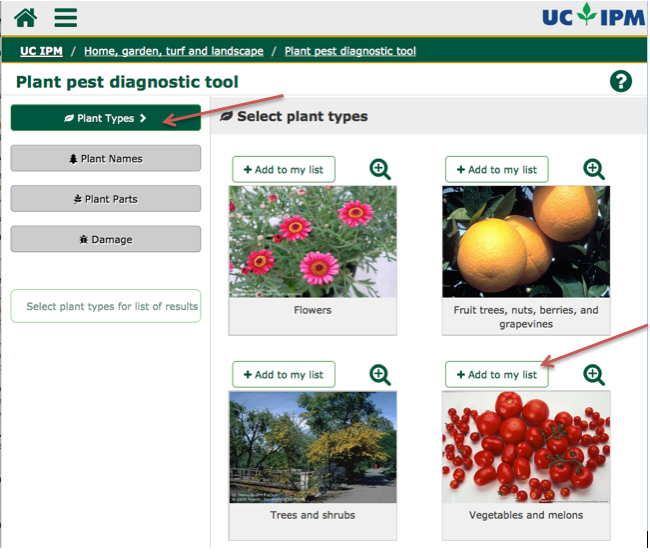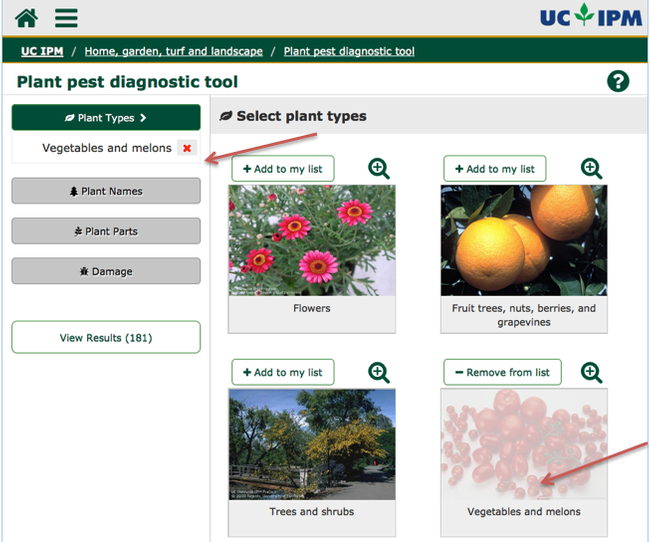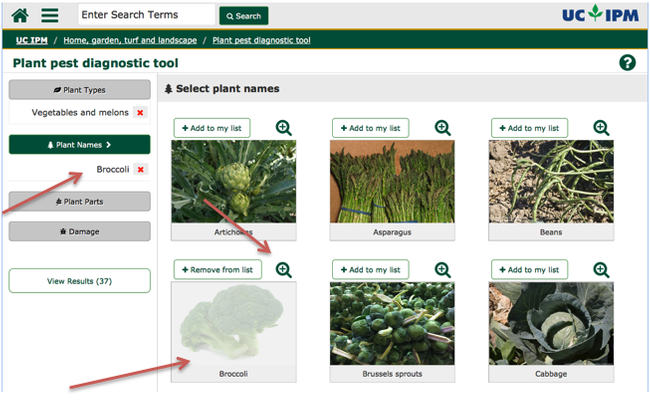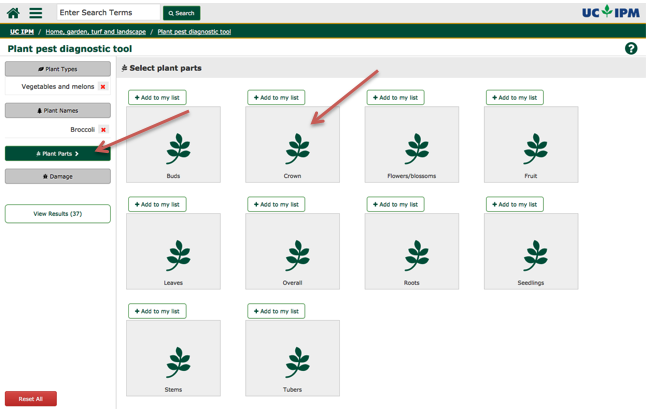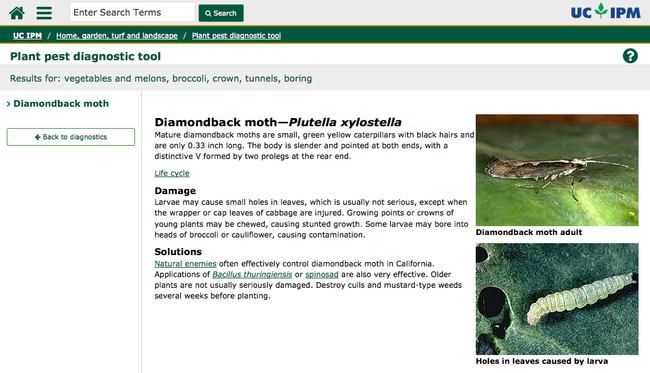UC IPM has created a diagnostic tool to help easily diagnose pest problems in your garden or landscape.
To get started using the tool, you'll first need to identify the affected plant in your landscape. Then, choose one of the four Plant Types categories that best describes it. To do this, click on the photo directly or use the +Add to my list button.
You will know the choice was made when the main photo is grayed out and your selection is listed in the left-hand column of the screen. To remove a selection, click on the red “X.”
Next, click on the Plant Names bar on the left to view a list of plants in your chosen category. Scroll down through the choices until you find your affected plant, (we'll use broccoli as an example) and then add the plant to your list by clicking on the photo or on “+Add to my list.” Note: you may also view bigger versions of images by clicking on the magnifying glass icon.
Your selection will again become grayed out and will be listed in the left column under Plant Names.
Once you've selected your plant, choose the Plant Parts bar from the left hand menu to view the plant parts choices. In our example, the crown of our broccoli has damage, so we will choose Crown. You can choose more than one plant part, but the more narrow your search, the more precise your results will be.
Once you've selected the plant part(s), click on Damage to see photographs and descriptions of damage that you may be observing on your affected plant. Choose the one that best matches your plant's damage symptoms. Our example plant (a young broccoli transplant) is showing signs of something boring into the crown.
After each selection, you will see a number in the View Results bar. The number of results will get smaller the more you narrow down your choices. Click the View Results bar underneath your selections in the left hand panel to see the diagnosis/es. If you have a handful of choices, you should be able to determine which pest or problem is affecting your plant by inspecting it and comparing the damage to the diagnosis description.
If your search brings up a large number of results, the search was too broad. Narrow down your selections when choosing plant names, plant parts, and damage. This will help you get your results faster and more accurately.
In our broccoli example, there is just one result.
The pest in our broccoli plant is the diamondback moth. We can use this page to help confirm this is our pest based on the description, photos, and damage symptoms. The results page also provides options on what to do about this pest.If none of the results seem to match the damage you are seeing, click the “Back to diagnostics” bar and try other damage symptoms. To reset your search and start over, select the Reset All bar. To return to the main UC IPM Home and Landscape page, click on "Home, garden, turf and landscape" in the green bar at the top of the page.
Author - Associate Director for Urban & Community IPM/ Area Urban IPM Advisor
